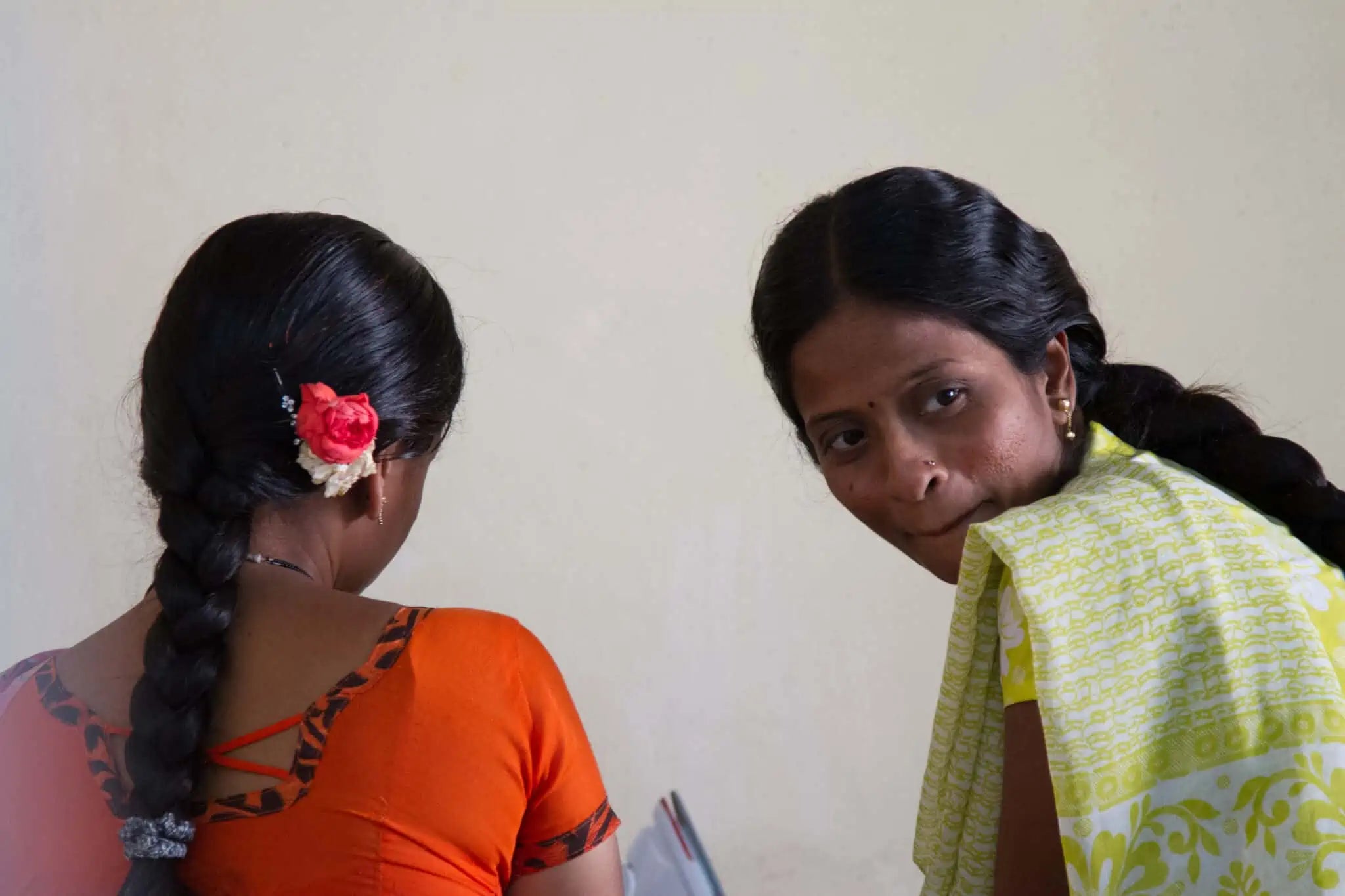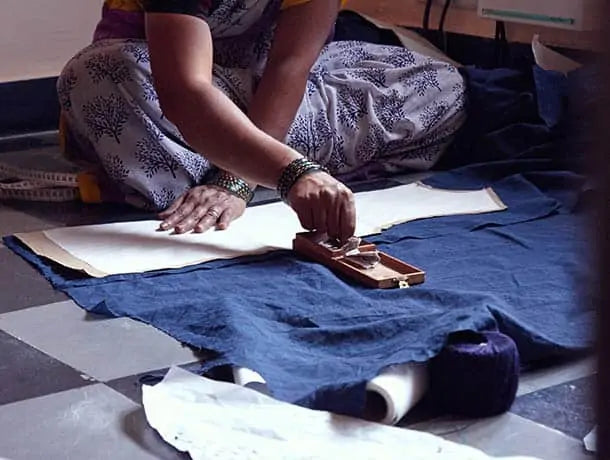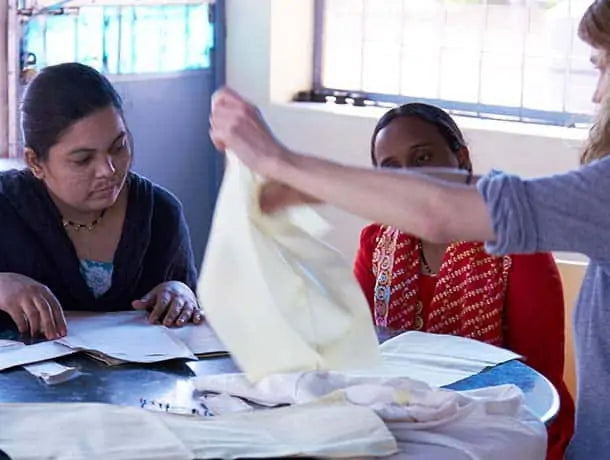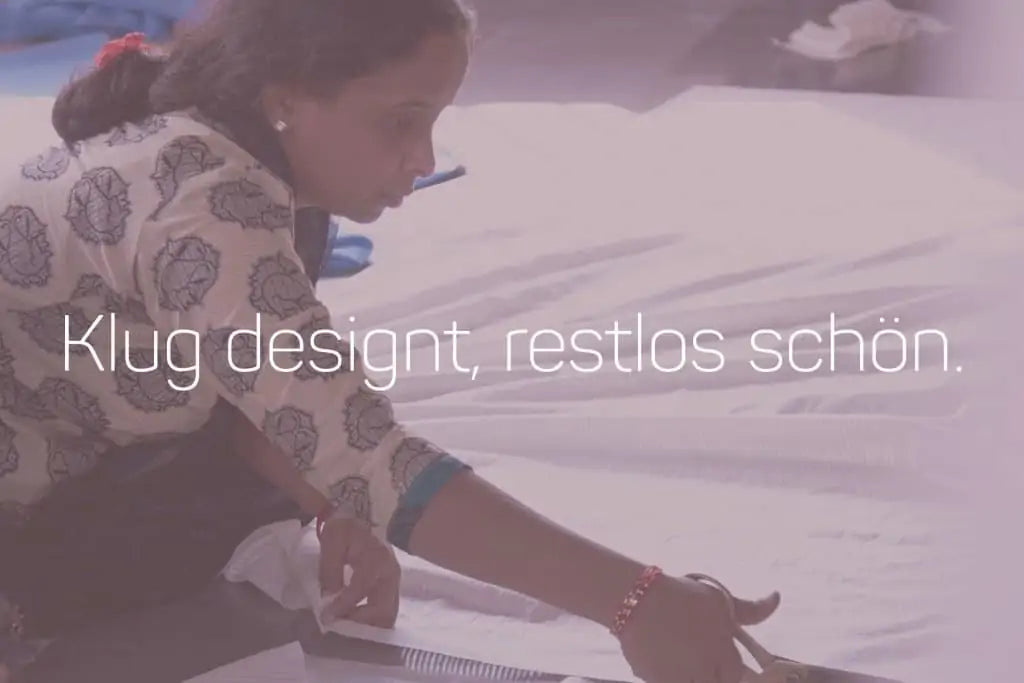Why is sewing a woman's job?
Use this text to share information about your brand with your customers. Describe a product, share announcements, or welcome customers to your store.

subheading
heading
Everyone knows the pictures from the textile factories, huge halls, hundreds of sewing machines and just as many young women, side by side, sewing the same seam over and over again. Or the pictures from Rana Plaza, the interviews with the crying seamstresses who talk about the catastrophic conditions in the dilapidated building, about their deceased friends, sisters or daughters.
Have you noticed anything? Seamstresses, girlfriends, sisters, daughters, mothers - our clothes are mainly made by women. Around three quarters of all those employed in the textile industry worldwide are women. But why is that? Our third question, which is rarely asked, is our unFAQ3: Why are our clothes actually made by women? And is that good (women have the opportunity to earn money) or bad (women are exploited under degrading conditions)? And anyway: why do you at Jyoti only employ women? You see, questions upon questions that we should all ask ourselves...
made by women
Since the 1970s, the proportion of women in labor-intensive industries has steadily increased. The economist Guy Standing coined the term “feminization of labor” for this development (source). The textile industry was and is one of the industries in which the most women work. Worldwide, over three quarters of employees are women, in India around 60%, in China 70%, in Bangladesh 85% and in Cambodia even 90% (source). But why is that, when tailoring is traditionally a male-dominated craft (link to week 1). And is this a step towards emancipation and equality? After all, generations of women all over the world have fought for the right to work. Or is this the next step in the search for ever cheaper labor, i.e. simply exploitation?
The answer is: both.
Follow me around – The sewing workshop
Halima and Suvarna show you how and where our products are hand-sewn and embroidered.
heading
subheading
heading
de-skilling
"Women taught me how to do the unskilled work." (1)
In a conventional textile factory, seamstresses sit at their sewing machines day after day, sewing the same seam over and over again. Over and over, over and over again, sewing sleeve to shoulder. And the next sleeve to the next shoulder. This “de-skilling”, i.e. the method whereby each seamstress only masters a single step, means that they are very quickly replaceable. After all, someone new can learn this step in a very short space of time. It means that the work can be miserably paid, because there is no skill behind it, just mindless execution. And it means that the pressure is enormous: anyone who complains or is too slow gets fired – they are so easy to replace.
Our Indian team members are involved in every step of the work: from cutting the fabrics and sewing the products to embroidering and finally ironing. English and literacy courses, as well as basic accounting, are also part of the daily work. This way, the women acquire real skills that they can use to get a better-paying job outside of Jyoti if they move.
(1) Laborers in India. van der Loop (1996), p. 390


subheading
heading
Conclusion: Bring on the good jobs!
The textile industry is the largest employer in India after agriculture. Around 45 million people, the majority of them women, work in this sector. All of these workers depend on these jobs; they have no alternative. One thing is clear: a job is the most important way to combat poverty! But the current situation for many women in the textile industry is that they work more than full-time and are still poor! Our conclusion: the solution is not to send women back home so that they are no longer exploited in the industry. The solution must be to create good jobs. Jobs where neither health nor life is at risk and with wages that can feed families. And that's why we simply did it!



